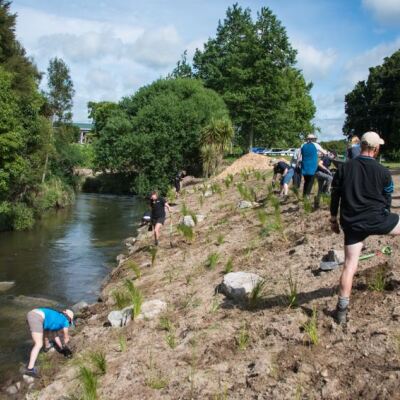
12 February 2019
Joint Rotorua Lakes Council and Bay of Plenty Regional Council pānui pāpāho/news release.
The community reference group to help Rotorua Lakes Council and Bay of Plenty Regional Council create a Ngongotahā Action Plan following last April’s floods will be in place by the end of February.
The final plan will include a range of work, agreed by the community reference group and the project team, aimed at reducing the risk and impact of future storm events in Ngongotahā.
A project team, which is made up of executive and specialist/technical staff from both councils has had regular meetings since the Independent Review Panel’s report was released in December and is now determining how the community reference group will be established, resourced and operated.
The group will be made up of community and iwi representatives and elected members.
The aim of the community reference group is to provide advice and recommendations to both councils and will lead community engagement and consultation around the development of plans for short/medium and long term actions.
The final agreed action plan is expected to inform considerations for both councils.
Rotorua Lakes Council and Bay of Plenty Regional Council have already been working together on immediate remedial works since the severe weather event which took place on April 29, 2018.
Following the event, the two councils jointly commissioned an Independent Panel to investigate the factors that may have contributed to the flood. The Panel’s report was released in December and made 24 recommendations to help reduce the risk and the potential impact of severe storm events in the area for the future.
While primarily focussed on Ngongotahā, the learnings and recommendations from the review are expected to be applied in future decision-making for the whole of the Rotorua district where applicable.
Work already undertaken and in progress includes:
Rotorua Mayor Steve Chadwick says the progress is reassuring.
“It is important for everyone to work together on this, pooling skills and resources to get the best outcome for the community.
“We want to ensure we get this right. We want to put things in place to try and reduce, as much as is possible, the impact of future extreme weather events.”
Bay of Plenty Regional Council Chairman Doug Leader says the opportunity to work collaboratively with Rotorua Lakes Council and the Ngongotahā community to help implement recommendations of the flood review is welcomed.
“We are keen to see both councils working together to achieve a safe and resilient Ngongotahā community.”
Project Timeline